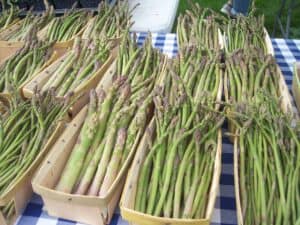
(Chelsea Update would like to thank Jennifer Fairfield and The Garden Mill for the information in this column.)
The weather gurus are having a tough time deciding exactly what kind of winter we’re going to have this year.
“The Farmer’s Almanac” says we’re going to have a colder-than-normal winter, and that the cold is going to set in around late-December, and stick around through at least early February.
The National Weather Service’s Climate Prediction Center says we have an equal chance of having above-normal temperatures, below-normal temperatures, or normal temperatures.
On the topic of snow, both are saying we can expect below normal precipitation – good news for those still trying to get over all the shoveling from last winter. I’ve decided to be prepared for whatever happens, and just bought myself a new pair of snow boots.
But, I’m also thinking ahead to spring – we’re in the process of putting up a small greenhouse at my house. I can’t wait to get started on all the plants for the garden – the greenhouse will give me the ability to grow a little more and to get started a little earlier. For now, I’ll have to settle for day-dreaming about what I’ll be growing in it and in my garden next year.
Plant bulbs
There’s still time to plant bulbs in SE Michigan. With daytime temperatures like we had last weekend, and the expected highs in the mid- to upper-30s this week, the ground hasn’t frozen yet, so take the opportunity to get in some last-minute bulbs.
Or, consider forcing some bulbs indoors this winter. Tulips and daffodils in bloom in your house in March can provide a welcome breath of spring, when it’s still winter outdoors and you can’t really do any gardening. You’ll need to provide your bulbs with a chilling period first – for as long as 12 weeks – so now’s the time to start.
Mulch
Once the ground has frozen, pile mulch on top of your perennials to help protect them from changing temperatures throughout the winter. Frost heave can cause damage to plants when roots are pushed up out of the soil as the soil “heaves” up when freezing causes it to expand.
Frost heave usually happens when the soil thaws and then freezes again. Most plants don’t survive these sorts of conditions, so a good mulch cover can keep the soil frozen during the winter, helping to prevent damage.
Spray evergreens
Consider spraying evergreens with an anti-desiccant to help keep them from drying out in the cold winter winds. When the ground is frozen, plants can’t take up water, but evergreens especially can lose what water they have when it’s windy. Anti-desiccants put a thin, waxy layer on the needles that helps the plant retain moisture.
It’s important to wait until the plants are fully dormant – usually around the time that the soil is completely frozen, and to follow the directions on the label. There are some studies that have shown that anti-desiccants aren’t very effective, but I know lots of gardeners and landscapers who swear by them.
Wind screens
The other option for helping to keep your evergreens from drying out is to give them a wind screen. Burlap is a great choice, because it allows some air flow, but provides protection from the worst drying effects of the wind. Drive stakes into the ground before the ground is frozen, and then attach the burlap to the stakes – I use cable ties, commonly referred to as “zip” ties. The burlap screen should be placed along the west and southwest sides of the plant, and possibly all around, depending on where your plants are placed, and how much wind they are getting. Do not totally cover the plants – leave the top open – so they can get sun.
















